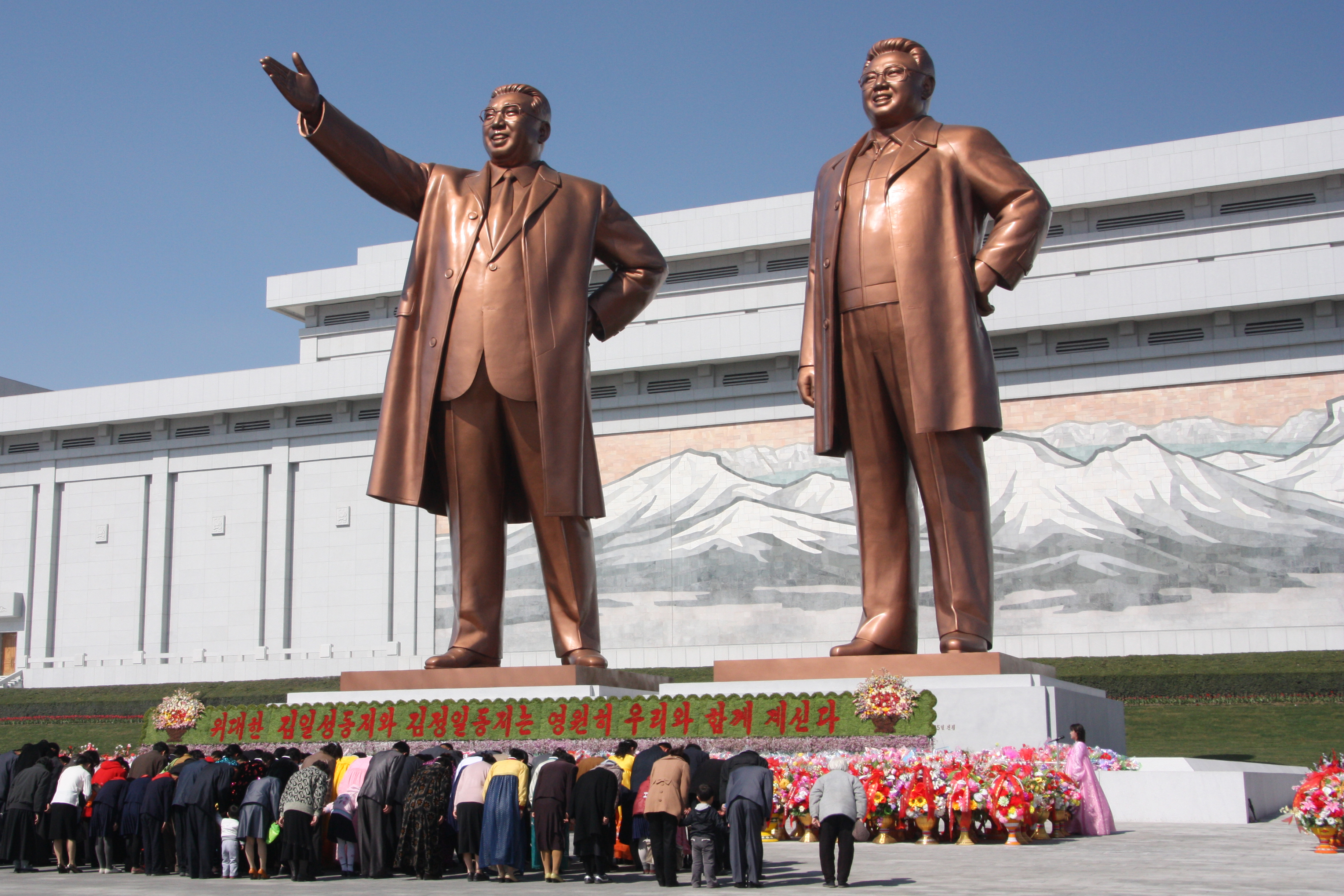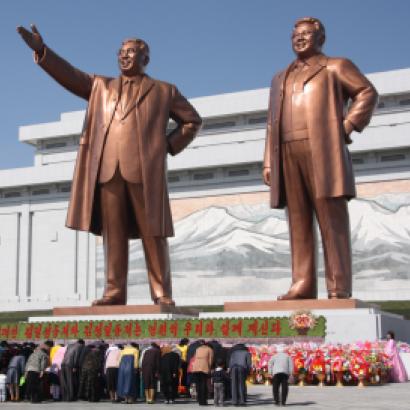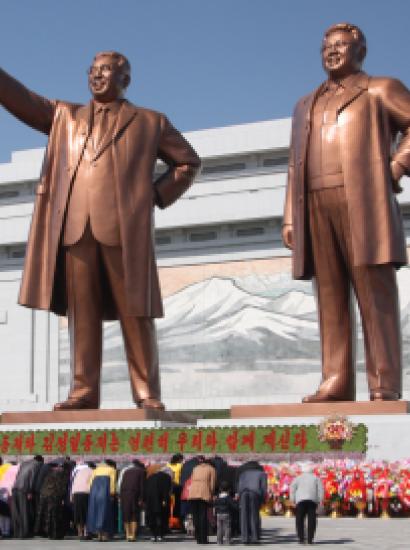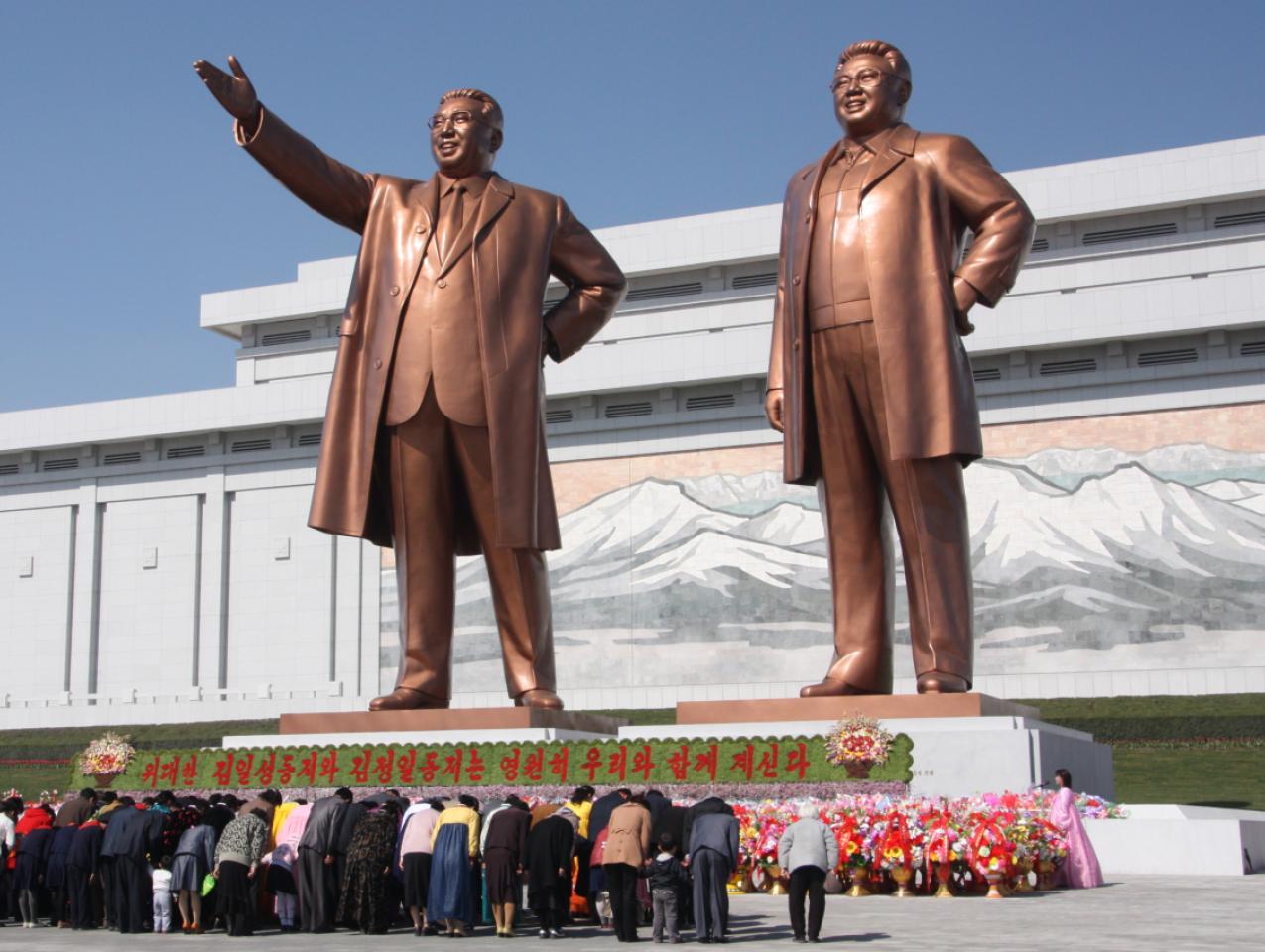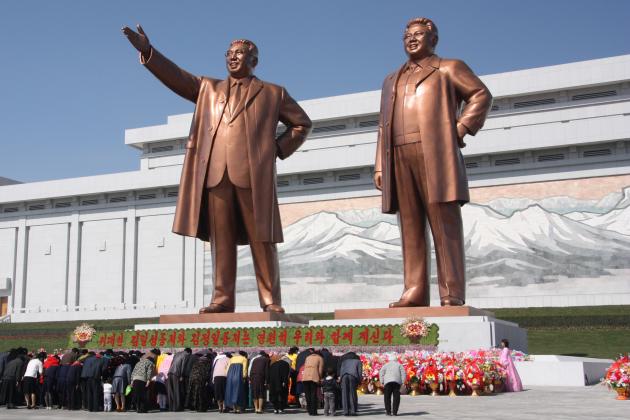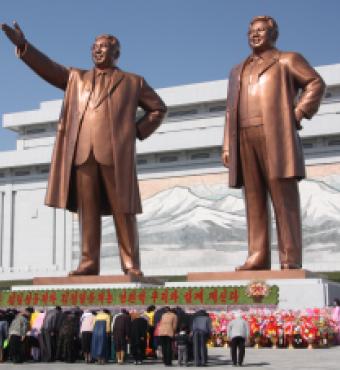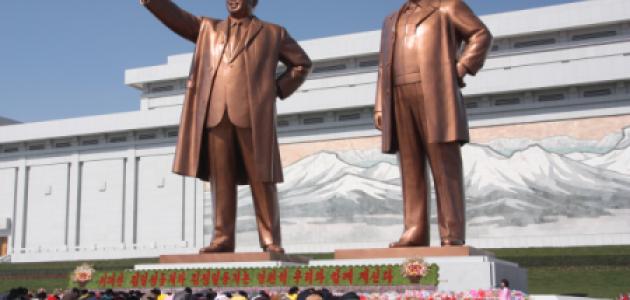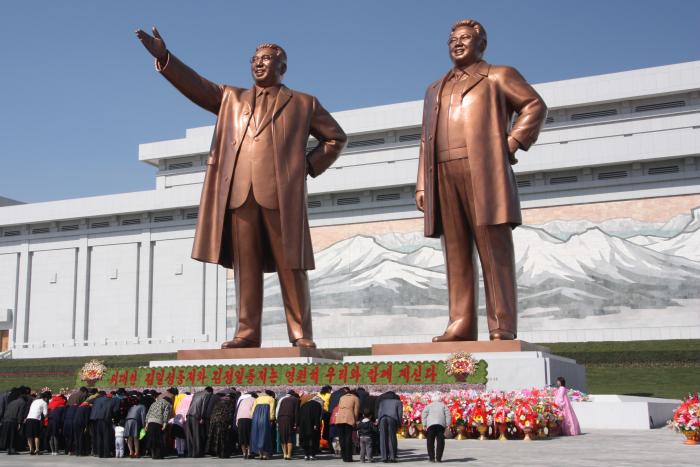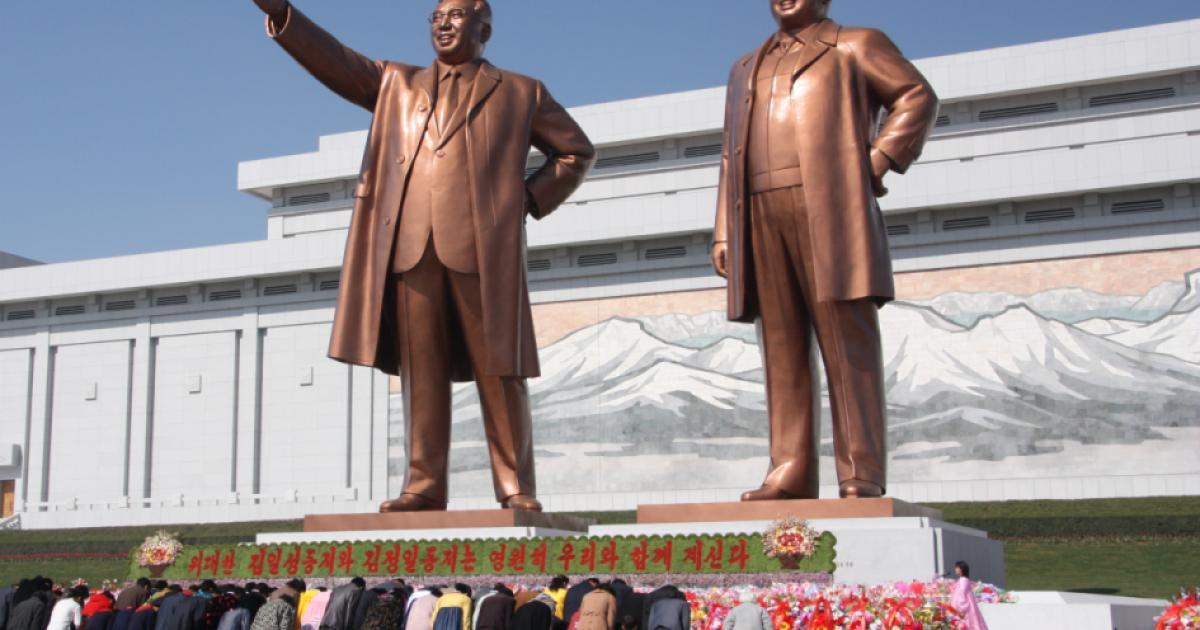As Washington swirls in the political controversy over alleged collusion between Donald Trump and the Russians during the 2016 presidential election campaign, a catastrophic crisis looms with North Korea’s pell-mell pursuit of missile-borne nuclear weapons. What the threat posed by the Democratic People’s Republic of Korea (DPRK) lacks in the cable news drama of a president under siege, it more than makes up for in a possible atomic Armageddon. Jim Mattis, in fact, declared that the DPRK was the “most urgent and dangerous threat to peace and security” in his testimony before the House Armed Services Committee on June 12. The Secretary of Defense made this assessment just five months after identifying Russia as the top threat facing the United States. This change in the ranking of international dangers resulted from the DPRK’s frequent ballistic missile and nuclear testing.
North Korea’s decades-long quest for nuclear warheads capable of hitting the American homeland has been compared by some to a slow-moving Cuban missile crisis. The analogy, like many analogies, is wanting. The famous 1962 nuclear standoff between the United States and the Soviet Union witnessed two mature superpowers calculating their vital interests over Moscow’s gambit for a forward missile base in Cuba. During the tense month of October that year, the White House and the Kremlin took the measure of each other, and wisely concluded the nuclear game was not worth a planetary annihilation. Sober minds produced a sober outcome. The current DPRK leader Kim Jong-un evinces no such sobriety.
The atomic threat stemming from the unstable but secretive DPRK has less in common with the confrontation more than fifty-five years ago than with an unpredictable summer storm. Then the world stood on the brink of the unthinkable when both global giants had their fingers on the nuclear trigger. Neither thundered the ominous and warlike intentions repeatedly uttered by the North Korean tyrant. Yet, the two crises share a similar ingredient of past follies which led to wars. Today, the brutal dictatorship of Kim Jong-un parallels the mindset of previous war-prone dictators, who—from Napoleon to Hitler to Saddam Hussein—misjudged the ultimate militancy of democracies when facing threats.
As Chairman Kim races toward missile and nuclear capacity to deliver mega-death bombs beyond East Asia to American shores, he could cross the threshold from saber-rattling to nuclear war through overconfidence, panic, or, most likely, miscalculation. But his making the wrong decision offers little consolation to those on the receiving end of an atomic strike.
War on the Korean Peninsula to preempt Kim’s nuclear missile tests is not lightly considered. The DPRK’s military possesses massive artillery and multiple-rocket launchers, which could rain down death on millions of people in the South’s nearby capital. The North Korean army has tucked these conventional weapons in mountainous hideouts just north of the Demilitarized Zone (DMZ)—a four-kilometer strip established between North Korea and South Korea at the end of the 1950-53 Korean War. On each side of the DMZ resides the most fortified border in the world where the antagonists stand in the U.S. Army phrase “eyeball-to-eyeball” on hair-trigger alert for war. Should war come, the North’s forces—with their underground tunnels—are expected to crash through the South’s DMZ defenses.
Repelling and crushing the North Korean armed forces lies within the ultimate capability of South Korea and the United States but the cost in lives to prevail would be immense—not to mention an expensive occupation and rebuilding of the North as well as the South. Besides, China would almost undoubtedly intervene as it did during the Korean War with waves of infantry. Even when won, a second Korean War would present the ultimate Pyrrhic victory.
War on the Korean Peninsula would unsettle all of Asia, as the promontory extending from China is a global crossroads for all the major world powers—Russia, China, America, South Korea, and Japan. These geostrategic factors have made the neighboring states favor the status quo for the last half century. A major conflict would transform North and South Korea as well as the geopolitical configuration of the region in unpredictable ways. There is the distinct possibility that a peninsula war would develop into a Sino-American conflict, as occurred in the Korean War. Russia and Japan might also be drawn into what could escalate into World War III. It is little wonder that all U.S. presidential administrations since the fall of the Berlin Wall have been so circumspect in their dealings with Pyongyang. All have adhered to the wisdom of not cornering North Korea, no matter how many sword-waving antics are performed by its desperate regime. Instead, they have resorted to medium-level deterrence, bribes, agreements, and near endless talks to reconcile the recalcitrant dynastic dictatorship.
Even President Trump’s Pentagon has quietly and recently withdrawn its armada of aircraft carriers that it dispatched to Korean waters in early spring. These ships were originally deployed as a warning and deterrent to Pyongyang’s barrage of missile tests. It is too early to know whether the administration responded to China’s request to de-escalate increasing tension by re-deploying the warships in return for prevailing on North Korea to reduce its nuclear testing provocations. Whatever the explanation for the departure of the flattops, the DPRK will not likely remain quiescent for long. Even so, this withdrawal demonstrates reluctance by the White House to be pulled into a conflict.
Ruling out war (unless forced upon the United States), Washington must confront the growing menace of a belligerent and erratic Kim, soon to possess nuclear-tipped intercontinental missiles, with a powerful U.S. deterrent. In short, we need a ring of steel around the DPRK. The point of an overwhelming nuclear and conventional posture is to drive home the message to the North Korean regime that launching nuclear arms amounts to little more than courting suicide. The United States sent this message to the Soviet Union for decades with great success.
So far the Pentagon has partially installed one Terminal High Altitude Area Defense battery, or THAAD, in South Korea to shoot down the North’s short- and intermediate-range rockets. The U.S. Navy has deployed destroyers and cruisers with their ship-borne Aegis anti-missile systems to Korean waters. No doubt some American nuclear submarines lurk beneath the seas’ surface not far away. These positive initial steps need augmenting with additional missile defense installations in the South and beyond.
It behooves Washington to buttress its defensive platforms with more THAADs and the Aegis Ashore ground-to-air interceptors (like those being stood up in Romania) on South Korean soil, the U.S. Guam base, Hawaii, and perhaps on some of Japan’s islands to contain the threat. Facilities beyond South Korea have become more of a necessity as the new government of Moon Jae-in has halted the full deployment of the first THAAD system in deference to Beijing’s opposition. Indeed, Tokyo is presently giving consideration to obtaining the Aegis Ashore system.
Finally, the Pentagon could consider frequent and routine flights of U.S. nuclear-capable bombers in the friendly skies near North Korea. These defensive measures will reassure our regional allies as well as enhance our deterrent capacity. During the Cold War, the United States amassed a huge nuclear deterrent against the Soviet Union, which never contemplated denuclearizing completely—just as North Korea will never abandon its fearsome weapons. But American policies could prevent the use of those weapons, as it did with the Soviet Union.
These measures will also gain leverage with China, which is the major patron of North Korea and which vociferously protested the first THAAD installation. By placing additional defensive arms in the region, the United States will incentivize China to rethink its ill-advised posture toward North Korea. Beijing did its best to marginalize the United States from East Asia during the Barack Obama presidency. At minimum, a prudent military buildup responds to Beijing’s expansive island reclamation and fortification in the South China Sea since 2014. This approach will also reinforce the Obama’s administration’s half-hearted Asian pivot policy. Only the presence of U.S. hard power will reassure allies and warn peer competitors of American interests.
The Trump administration hopes to drive a wedge between Beijing and Pyongyang to further isolate the insular rogue regime. Cutting China’s economic and political lifelines to Pyongyang is the only practical means to tighten the international sanctions already placed on the Kim dictatorship to compel it to cap its missile and nuclear ambitions. So far China has been spared any real costs for its unremitting sponsorship of the world’s most dangerous nation. Sanctions on Chinese citizens and businesses will further increase the wages of China’s rogue backing. Cautious defensive actions may not offer a dramatic policy to match the high-drama of the contemporary Washington scene, but they afford the only realistic option at this time to contain the North Korean threat.







